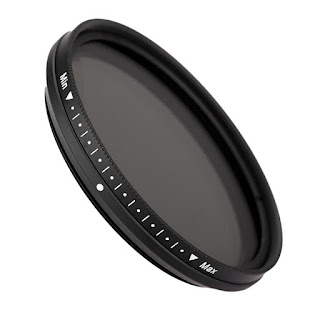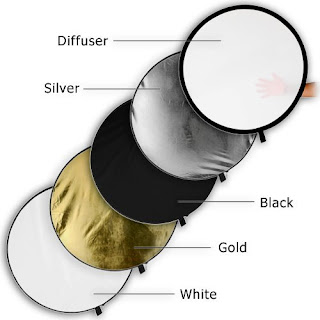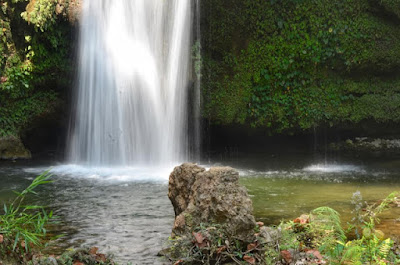 |
| ND Filter Photography |
 |
| Types of Camera Filters |
Filter Basics
To use a filter, simply attach it to the front of the camera lens. Light passing through the camera to the film must first pass through the filter, causing the filter to work. For an SLR or TLR camera, you can get a good idea of how the filter will change things by looking through the viewfinder. With point and shoots, however, you will be really working in the dark as most P&S; the viewfinders of the cameras do not really show what the lens sees.
One of the best things about filters is that they can be combined to achieve multiple effects. This allows you to really personalize your shots. You can just use a filter to filter out the sun's reflections, or get as wild as adding light stars and a blue haze to everything! Filters can be divided into 10 main groups, so let's take a look at each group and the filters that belong to it. When we're done, you'll have a good idea of what filters you can use to do what.
Skylight, Haze & UV Filters
These filters are generally colourless or pale pink and are served to cut down on the effect that ultraviolet has on daytime shots. With the UV effect reduced, colour landscapes and other outdoor shots did have as strong a blue cast. It also helps to reduce distortion in a picture (such as the heat waves you might see if you look at a dark road in hot weather).
Lastly, these are lenses serve as a good, affordable way of protecting the main lens from scratches, dust, fingerprints, and potential damage by taking the hits itself. It's much cheaper to replace a $10-20 filter than having to replace a $100-500 lens because the actual glass got scratched or damaged.
The main difference between them is that the skylight has a pinkish tinge and will remove excessive blue and UV light, increasing the contrast. It gives a slightly warmer appearance to color images. Haze filters will add yellow to counteract excessive blur and sharpen the image in hazy conditions, while the UV filter primarily blocks out the UV light which reduces the blue or violet cast that it can cause. Some consider the UV to almost be redundant now because the most high-quality lens already has a UV coating on them.
Lastly, these are lenses serve as a good, affordable way of protecting the main lens from scratches, dust, fingerprints, and potential damage by taking the hits itself. It's much cheaper to replace a $10-20 filter than having to replace a $100-500 lens because the actual glass got scratched or damaged.
The main difference between them is that the skylight has a pinkish tinge and will remove excessive blue and UV light, increasing the contrast. It gives a slightly warmer appearance to color images. Haze filters will add yellow to counteract excessive blur and sharpen the image in hazy conditions, while the UV filter primarily blocks out the UV light which reduces the blue or violet cast that it can cause. Some consider the UV to almost be redundant now because the most high-quality lens already has a UV coating on them.
Coloured Filters
Coloured filters allow only the parts of the UV rays that are closely related to it pass through while stopping complementary colours from appearing. They are available in three levels depending on strength and come in the three primary colours (red, yellow, blue) and three complementary colours (cyan, magenta, green). The main rule of thumb is to remember that each complementary colour will block the non-contributing primary (for example cyan blocks red) and that a primary colour filter will block the other two primaries.These are particularly useful for black and white photography, as the film is more sensitive to ultraviolet and blue than our eyes are. This causes blue skies to appear very pale in a black and white photograph, even though we remember it being very vivid. Using a yellow filter will cause some of the blue and UV to be absorbed, and thereby deepen the sky tone making it darker. An orange filter darkens it more, and a red filter will yield dark skies and dramatic clouds. You must remember, though, that these filters will lighten colours similar to themselves, so if you shoot a red apple with a red filter, the apple will appear brighter than reality.
Colour filters can also be used with colour film to produce surrealistic effects on a shot. When used with colour film, however, the effect is almost the opposite of its normal look. Instead of fading its colours, it will enhance them, though it might also cause everything else in the picture to be tinged with the same colour. For example, using a green filter with the colour film on a landscape shot will produce an image with vivid green trees and grass, but the sky will look odd.
Polarizers
Polarizers serve some important purposes and are really a must-have for any camera kit. Not only do these lenses darken blue skies without effecting other colours, but they also reduce reflect and glare from a variety of objects while increasing contrast. This allows for better shots over water, through the glass, etc.
 |
| Polarize Filter |
Neutral-Density (ND) Filters
 |
| ND Filter |
Graduated Filters
Colour-Balancing Filters
Star Filters
Diffusers
A fog filter is a special variety of diffusion filter that contains extra particles and pebbles to scatter light just like real fog. They soften the picture considerably while muting colours, lowering contrast, and causing a halo to appear on lights.
 |
| Diffusers Pic 1 |
 |
| Diffuser Pic 1.1 |
Special-Effects Filters
Thank you for reading.


1 Comments:
Click here for CommentsAwesome work sir. All GSM Tools Download Free
Please let me know if you have any questions ConversionConversion EmoticonEmoticon